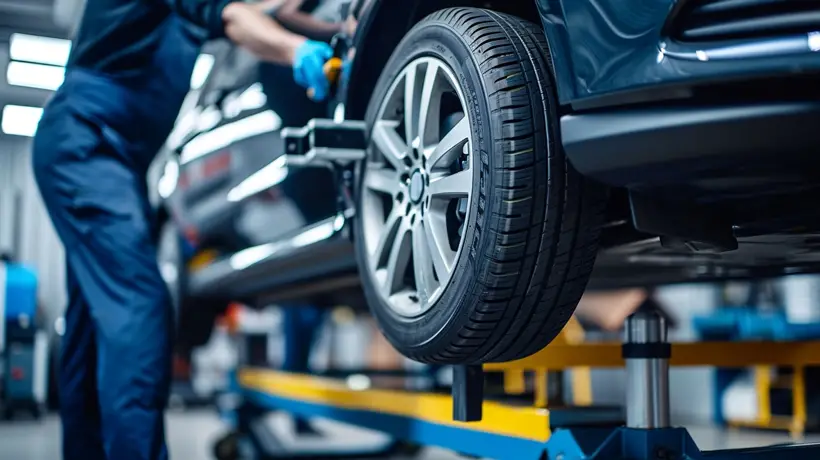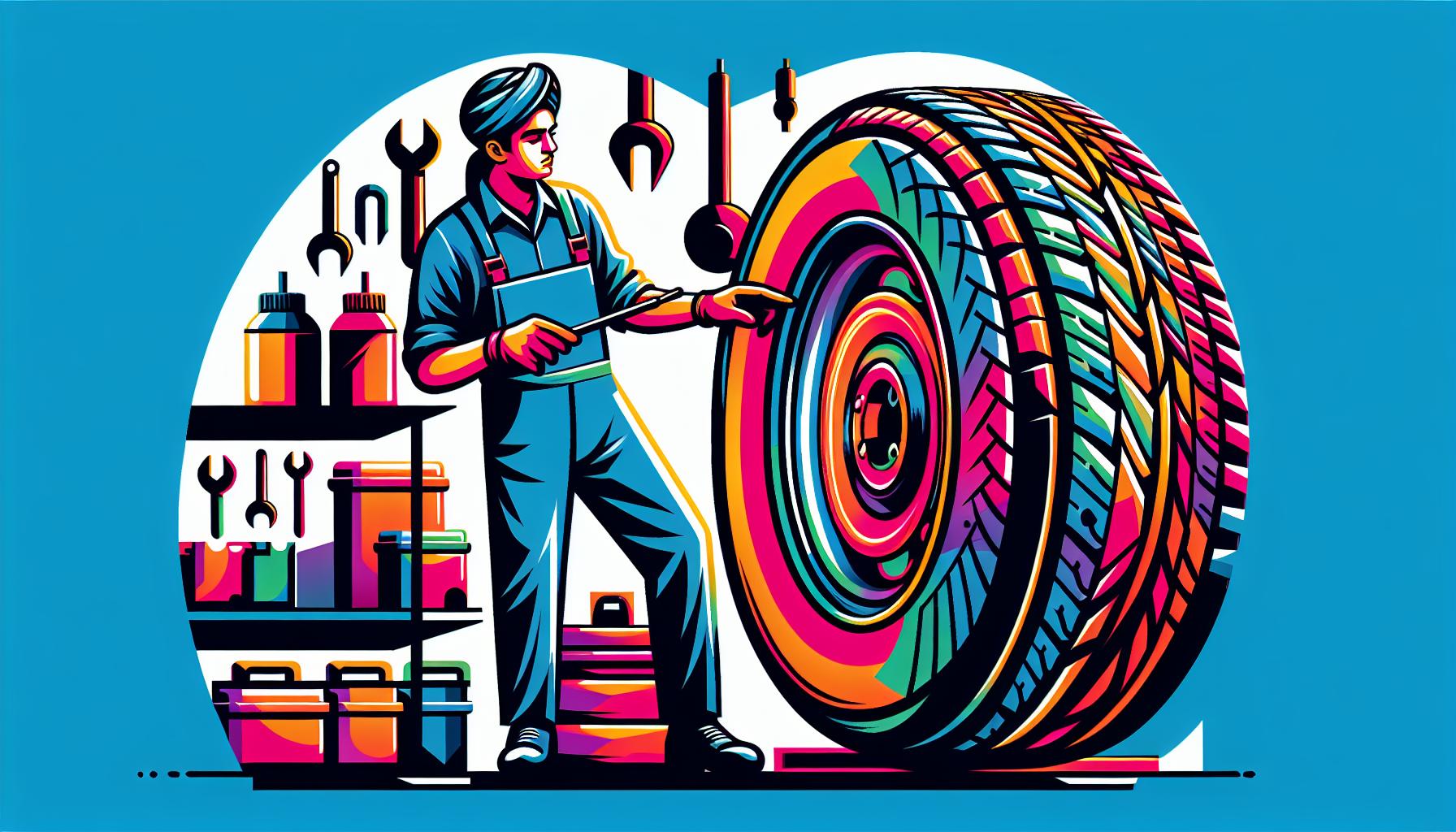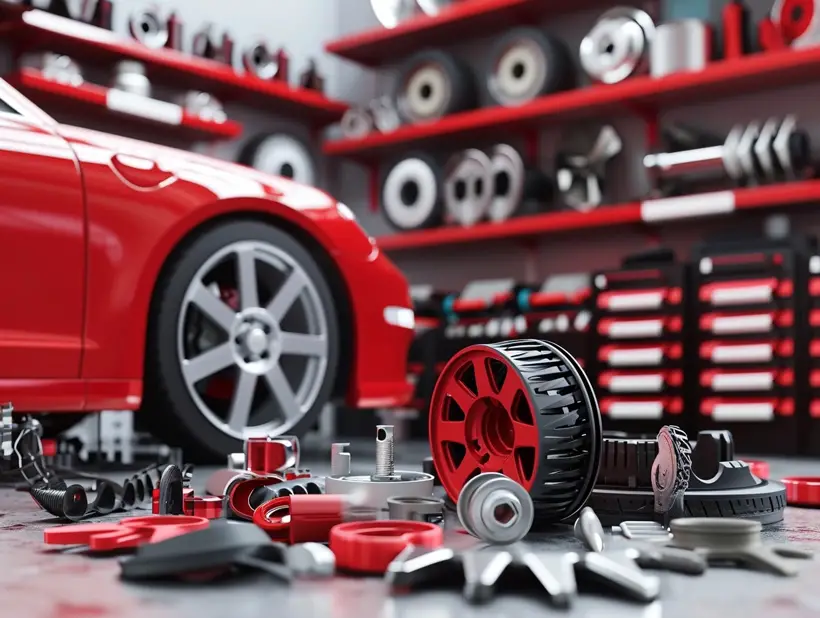I’ve always been meticulous about car maintenance, but tire rotation was one aspect I overlooked for far too long. It’s a simple yet crucial procedure that can extend the life of your tires significantly. I’m here to share my insights on how regular tire rotation can be a game-changer for your vehicle’s performance and your wallet.
Understanding the basics of tire rotation helps prevent uneven wear and tear, and it’s not as complicated as it might seem. I’ll walk you through the what, why, and how of rotating your tires, ensuring you’re equipped to keep your ride smooth and your tires in top shape. Let’s dive into the world of tire rotation and learn how to get the most out of every mile.
The Importance of Tire Rotation
In my journey as a car owner, I’ve come to realize that tire rotation is an unsung hero in vehicle maintenance. Let me walk you through its significance. Tire rotation isn‚Äôt just about moving tires around; it’s a vital practice that ensures even tire wear. Pivoting on this, your car will handle better and your tires will last longer.
Here’s something I didn’t know at first: front and rear tires wear differently. Why? Well, front tires are responsible for steering and most of the braking. This puts a lot more stress on them. By rotating tires, I’m essentially equalizing these forces. This means that each tire wears down at a similar pace, which is crucial because uneven wear can lead to poor performance and might even become a safety hazard.

Rotating your tires also benefits your wallet. Think about it — tires that wear evenly don’t need to be replaced as often. Regular rotation helps me avoid premature tire purchases, and who doesn’t love to save money?
What’s more, I’ve noticed that my vehicle’s traction and fuel economy have improved since I started rotating my tires every 5,000 to 8,000 miles ‚Äî the general recommendation. I’ve also observed a decrease in road noise, which is a nice bonus on those long drives.
Vehicle manufacturers typically outline a specific rotation pattern and schedule in the owner‚Äôs manual. I’ve learned that adhering to this guidance is an integral part of maintaining your car’s integrity. Since I’ve made tire rotation a non-negotiable aspect of my car care routine, my ride’s been smoother and I can drive with peace of mind, knowing that I’m maximizing my tire investment. It’s one of those maintenance tasks that‚Äôs easy to overlook but makes a huge difference once you make it a habit.
Understanding Tire Wear Patterns
When I delve into the intricacies of tire wear, it’s fascinating to discover that it’s not just about how long the tires have been on the road. Tire wear patterns can speak volumes about the condition of your car. Regular inspections can reveal issues with alignment, tire pressure, and even suspension components. Understanding these patterns is pivotal for proactive car maintenance.
One common pattern is uneven wear. If you notice more wear on the outside edges of the tire, it could indicate that your tires are under-inflated, causing them to ride on their shoulders. Conversely, wear in the center of the tire typically means over-inflation, leading the tire’s middle to bulge and make more contact with the road.

Another pattern to watch for is cupping, which manifests as dips or scalloping around the tire’s surface. This usually points to a problem with the suspension – shocks or struts could be worn and fail to keep the tire firmly on the road. Additionally, feathering is when the edges of each tread rib develop a slightly rounded edge on one side and a sharp edge on the other. This could signal poor toe alignment.
Proper wheel alignment is crucial not only to prevent uneven wear but also to ensure a smoother ride and optimal fuel efficiency. When tires are angled incorrectly, increased resistance occurs, which means your engine has to work harder. That’s more fuel burned and less money in your pocket.
To break it down further, let’s look at some stats. According to a study by the National Highway Traffic Safety Administration:
| Tire Issue | Crash Risk Increase |
|---|---|
| Under-inflated | 3 times |
| Tread depths less than 1/16 inch | 2 times |
Maintaining proper tire inflation and tread depth is not just a cost-saving measure; it’s a safety imperative. I always recommend keeping a tire pressure gauge in your glove compartment and checking your tires monthly. It’s a simple tool, but it can go a long way in preserving your tires and keeping you safe on the road.
When to Rotate Your Tires
Knowing precisely when to rotate your tires is key to maximizing their lifespan and maintaining your vehicle’s performance. Most car manufacturers recommend that you rotate your tires every 5,000 to 7,500 miles. However, it’s always best to check your vehicle’s owner manual or consult with your mechanic as some models may have different requirements.
If you’re like me, you might not always keep track of mileage. Another good rule of thumb is to have your tires rotated with every oil change, assuming that you’re changing your oil every 3,000 to 5,000 miles. If you’ve opted for extended-life oils and your changes are less frequent, then sticking closely to the mileage markers becomes more pertinent.
Here’s a quick look at some signs that your tires need rotating:
- Uneven tread wear
- Vibration at highway speeds
- Decrease in fuel efficiency
- Visible signs of tire damage
Proactive attention to tire rotation can help detect and address other vehicle issues before they worsen. It’s also an excellent opportunity for a professional to inspect the overall condition of your tires and assess whether they need to be balanced or if your car needs an alignment service.
For performance and all-wheel-drive vehicles, experts suggest even more frequent rotations‚Äîabout every 3,000 to 5,000 miles. This is due to the complex drivetrain components in these vehicles, which can lead to more nuanced wear patterns. Again, this is subject to manufacturers’ specifications, and consulting the relevant documentation or a trusted professional is advised.
Rotating your tires isn’t just a suggestion; it’s an integral part of keeping yourself and others on the road safe. By ensuring your tires wear evenly, you maintain the optimal traction and handling of your vehicle. As you stay on top of your car maintenance routine, remember that tire rotation is a simple yet crucial element that should never be overlooked.
How to Rotate Your Tires
Rotating tires is a task I often tackle myself, and it’s something that many car owners can do with a bit of know-how and the right tools. To start, you’ll need a car jack, jack stands, and a wrench to loosen and tighten the lug nuts. Safety should always come first, so I make sure to park on a level surface and engage the parking brake before lifting my car.

Firstly, I refer to my vehicle’s owner’s manual because it specifies the appropriate rotation pattern for my car. FWD, RWD, and AWD vehicles all have different patterns that cater to their specific wear and tear. Most times, the front wheels move to the rear, and the rear wheels move to the front in a crisscross fashion for FWD vehicles. For RWD or AWD, it might be the opposite, or sometimes it’s just a straight swap front to back.
As I loosen the lug nuts, I’m careful not to take them off completely just yet. Then, I use the car jack to lift one wheel off the ground and place a jack stand underneath for stability. I repeat this process until all tires that need rotating are elevated.
I’ll then remove the tires, keeping track of their original position and adhere to the recommended rotation pattern. Once they’re in their new positions, I place the tires back on the wheel mounts and screw on the lug nuts by hand to ensure they’re not cross-threaded.
After that, it’s essential to tighten the lug nuts to the manufacturer’s specified torque using a torque wrench. This ensures that the wheels are securely fastened and I won’t run into any trouble down the road. Finally, I lower the car back to the ground and make one last check that the lug nuts are tightened properly.
Rotating tires doesn’t only contribute to even tire wear; it also offers me a chance to inspect the overall condition of my tires and wheels. I look for signs of damage or wear, such as cracks or bulges in the sidewall, and check my tire pressure to ensure that it’s at an optimal level. Regular inspection and maintenance like this can prolong the lifespan of my tires significantly and lead to a safer driving experience.
Benefits of Regular Tire Rotation
Maintaining a vehicle can be a costly affair, but there’s one aspect of car care that’s often overlooked yet remarkably effective in extending the longevity of my investment: regular tire rotation. It’s a simple process, but it can yield significant benefits.
Even Tire Wear is perhaps one of the most direct results of consistent tire rotation. By rotating my tires on a regular schedule, I ensure that the tread wears down more uniformly across all four tires. This balanced wear helps maintain optimal traction on the road, which in turn aids in preventing accidents.

In addition, having tires that wear evenly means I hardly ever find myself in a situation where one tire is significantly more worn than the others, which can affect the handling and stability of my vehicle. This is not something to take lightly, as handling is crucial in emergency maneuvers.
Another substantial benefit of rotating my tires is the Improved Fuel Efficiency. With tires wearing down evenly, my car doesn’t have to work as hard to move forward, which can lead to better mileage. This is because uneven tires can cause increased rolling resistance, which the engine needs to work against.
When I’m regularly rotating my tires, I also have the chance to Check for Other Issues. I’m able to inspect the tires for any damage, like cracks or objects that may have lodged themselves in the tread. Furthermore, it gives me the opportunity to check the air pressure and adjust it as necessary, which is another factor that can affect my vehicle’s fuel efficiency and handling.
| Benefits of Tire Rotation | Description |
|---|---|
| Even Tire Wear | Prevents uneven tread, enhancing safety and handling |
| Improved Fuel Efficiency | Reduces rolling resistance, saving on gas |
| Opportunity for Inspection | Identifies damage or issues, ensuring timely repairs |
Staying proactive with tire maintenance doesn’t just potentially save me money on tires in the long run; it also helps ensure that my car is safe to drive. Regular tire rotation is an overlooked service that really should be a staple in every car owner’s maintenance plan. It’s simple and efficient, and it keeps my car running smoothly on the road.
Conclusion
Regular tire rotation is a simple yet crucial part of vehicle upkeep that I can’t stress enough. It’s a key practice that ensures you’re getting the most out of your tires and ultimately, your car. By making it a non-negotiable element of your maintenance routine, you’ll not only save money in the long run but also enjoy a smoother, safer ride. Remember, taking care of your tires means they’ll take care of you on the road. So don’t put it off‚Äîmake tire rotation a priority and drive with confidence knowing you’ve done your part in vehicle care.
